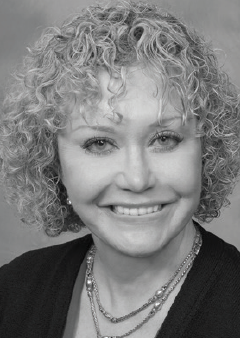
People who seek refractive surgery often have trouble wearing contact lenses. The ocular surface disease (OSD) that causes their intolerance is also what makes them suboptimal candidates for laser vision correction (LVC) until the problem is addressed. For this reason, I have trained my technicians to perform a series of diagnostic assessments if a patient checks off even one symptom of OSD on the psychometric test that is a part of the preoperative evaluation at my practice. Specifically, my technicians assess these patients’ tear film osmolarity (TearLab Osmolarity System; TearLab), level of the inflammatory marker matrix metalloproteinase-9 (InflammaDry; Quidel), and meibomian glands (LipiScan Dynamic Meibomian Imager [Johnson & Johnson Vision] or Keratograph 5M [Oculus Optikgeräte]).
Because only approximately half of patients with OSD are symptomatic, this approach identifies just half of the affected individuals. An LVC evaluation at my practice also includes topography, however, and OSD will disrupt the mires and the color-coded contour map. After I walk into the exam lane, I immediately review the patient’s topography. Suspicious findings on topography and/or at the slit lamp will prompt me to order the aforementioned diagnostic testing in asymptomatic patients who have not already undergone these tests. If any preoperative test results raise my concern, the refractive surgery consultation ends—no cycloplegic refraction or pupillary dilation—and I explain that we must manage the OSD before proceeding. Usually, 1 month of treatment achieves a sufficient improvement to allow us to complete the LVC evaluation.
As far as I know, I have never lost a potential LVC (or cataract) patient because of my cautious approach. Instead, they are grateful. I explain the findings, their contribution to any contact lens intolerance, and the negative impact OSD has on LVC outcomes; then, I describe the treatment and have a follow-up visit scheduled for a month later. My commitment to optimizing ocular surface health before refractive surgery is the reason that I will not permit a patient from out of town to book the preoperative examination followed by surgery 48 hours later. I insist on two separate trips, and if a patient objects, I offer to refer him or her to someone else. That firmness has been persuasive.
CASE EXAMPLE
A 42-year-old woman experiencing contact lens intolerance presented to my practice from out of town with a desire to undergo LVC. The patient’s manifest refraction was -4.00 -0.25 × 180º = 20/25 OD and -4.25 -0.50 × 175º = 20/25 OS.
Osmolarity testing yielded readings of 319 and 329 mOsm/L in her right and left eyes, respectively. InflammaDry testing was positive in both eyes, and meibography revealed severe bilateral meibomian gland disease, with significant gland dropout. A slit-lamp examination found 3+ meibomian gland inspissation without scurf, a decreased tear lake, and 2+ central corneal staining in both eyes.
I halted the workup before pupillary dilation and cycloplegic refraction. I then discussed with the patient her OSD and initiated a bilateral treatment regimen of twice-daily lifitegrast ophthalmic solution 5% (Xiidra; Shire), lid soaks and scrubs twice a day, preservative-free tears every 2 hours while awake, and erythromycin ointment at bedtime. I also instructed her to take an oral omega-3 supplement daily. Prior to leaving the office, the patient underwent the BlephEx procedure (BlephEx) and treatment with the LipiFlow Thermal Pulsation System (Johnson & Johnson Vision). I prescribed loteprednol etabonate ophthalmic gel 0.5% (Lotemax 0.5% Gel Drop; Bausch + Lomb) administered four times daily for 1 week.
One month later, the patient returned for an evaluation. Osmolarity testing yielded readings of 301 and 303 mOsm/L in her right and left eyes, respectively. A slit-lamp examination showed bilateral 1+ to 2+ meibomian gland inspissation. Central corneal staining had resolved in both eyes.
The patient underwent uneventful epi-Bowman keratectomy for distance correction in both eyes. UCVA measured 20/20 OD and 20/25 OS 1 week after surgery and 20/16- OD and 20/20 OS 1 month postoperatively.
TAKE-HOME POINTS
- Infrequently, 1 month of treatment will not sufficiently improve a patient’s OSD for an LVC evaluation. For instance, I require a tear film osmolarity reading of 316 mOsm/L or lower to proceed with the preoperative evaluation and surgery soon after. When the osmolarity reading is 317 mOsm/L or higher, as in the case example presented herein, I initiate a prescription medication, lifitegrast or cyclosporine ophthalmic emulsion 0.05% (Restasis; Allergan), as part of the treatment regimen. I usually favor lifitegrast because of its faster onset of action. I also encourage patients to undergo the BlephEx and LipiFlow procedures, and I see them again in a month to finish the preoperative evaluation.
- Meibography is a powerful tool for educating patients. It allows me to show symptomatic individuals why they have become contact lens intolerant, and it permits all patients—including asymptomatic ones—to see their disease and understand what treatment will achieve.
- When meibomian gland loss is significant, my favorite approach has become to perform the BlephEx procedure followed immediately by treatment with the LipiFlow Thermal Pulsation System. The former removes the lifetime accumulation of biofilm that is occluding the meibomian glands’ orifices. Thermal pulsation therapy then pushes out the unhealthy meibum, leaving patients with clean glands. I had thought that the out-of-pocket expense of these OSD treatments (although discounted by my practice when performed together) and LVC would be prohibitive, but I have found patients across the economic spectrum to be receptive. It is therefore important to offer appropriate treatments to all patients rather than to prejudge someone’s financial status or willingness to pay out of pocket for procedures.
- I offer BlephEx and LipiFlow treatments, usually together, especially to patients with OSD who are considering premium cataract surgery or LVC. These surgical interventions are once-in-a-lifetime opportunities, so any OSD should be under control. I explain to these patients that OSD management will make the preoperative measurements more accurate and reduce the risk of postoperative complications.
- Technicians, scribes, and front desk staff should receive education so that they can answer patients’ basic questions about elective procedures for OSD.


